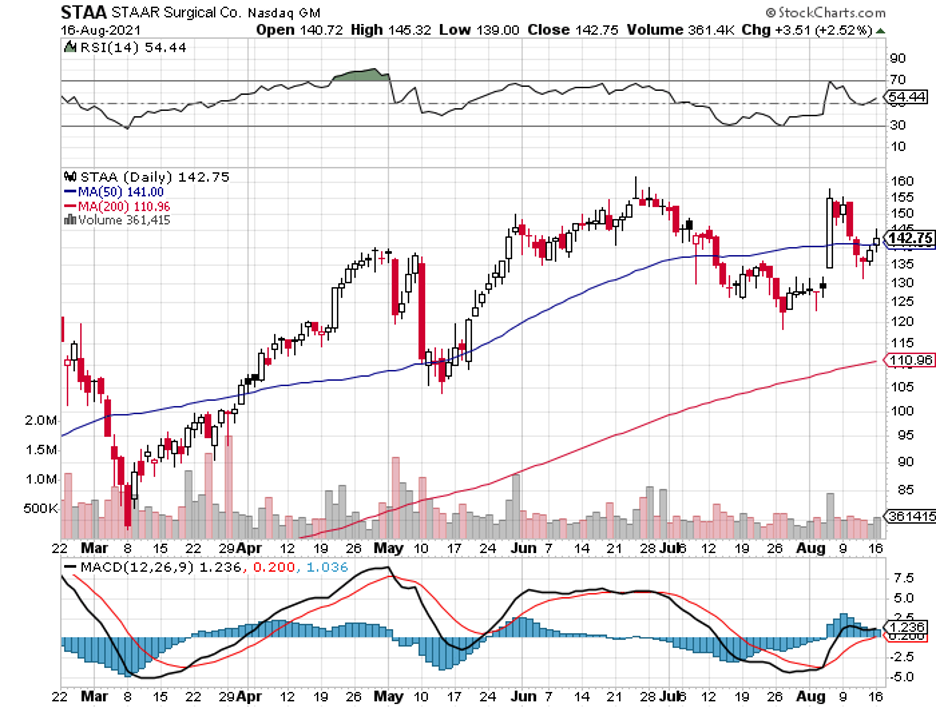The investing world is filled with buzzwords, and one of the most widespread lately is “compounders” – aka stocks with the capacity to generate double-digit compound growth in terms of revenue and earnings.
They’re typically dubbed as the “next” Amazon (AMZN), Visa (V), or Nike (NKE), making them heavy favorites among growth investors aggressively looking for companies that can generate high returns in the next five to 10 years.
Ultimately, the goal is to find the next “10 bagger.”
Most investors are perfectly content with big and popular compounders like Mastercard (MA) and Alphabet (GOOGL).
Since the healthcare and biotechnology sector has its own well-known compounders, such as Eli Lilly (LLY) and UnitedHealth Group (UNH), it’s easy to miss the smaller lesser-known companies that are consistently generating high growth in their profits over the past years.
A good example of this is Staar Surgical (STAA).
Founded way back in 1982, this under-the-radar stock is up by over 243% over the past 12 months and more than 85% this year alone.
Saying that the company has had an impressive 2020 despite the pandemic is an understatement.
The company’s latest product is an implantable lens that works to correct myopia or nearsightedness.
This technology addresses a potentially massive market, taking into consideration the growing number of vision-related problems globally.
Staar anticipates the lens, which has already been made available across Europe and even Asia for roughly five years now, to enter the US market by the fourth quarter of 2021.
Inasmuch as the human eyes are considered powerful organs, they are definitely far from perfect. That’s why eyeglasses and even contact lenses have been in the market for decades.
Aside from its new product, Staar’s bread and butter is its Visian implantable collamer lenses, which are designed to deal with various vision issues including myopia (nearsightedness), presbyopia (an incapability to focus on nearby objects), and astigmatism (blurred or distorted vision).
Although they are quite different, many people confuse Staar’s solution with LASIK.
The key difference is that LASIK surgeries necessitate trimming of the cornea using lasers to correct the vision of the patient.
In contrast, what Staar does is to implant the corrective lenses directly in the eye, specifically behind the patient’s iris but right in front of the cornea.
This makes Staar’s solution reversible and, of course, less invasive compared to LASIK.
To date, Staar’s surgery is more expensive at $3,500 per eye, while LASIK costs roughly $2,246 for each eye.
However, this cost is expected to go down as more doctors eventually choose Staar implants over other options.
Looking at its trajectory, Staar could lead to LASIK becoming obsolete in the same way that radial keratotomy stopped being the norm before.
So far, Staar remains profitable and continues to grow its quarterly profits by 18.3% year over year. However, it’s the long-term revenue that shareholders would stand to gain most.
At this point, roughly 30% of the world is diagnosed as nearsighted. By 2050, over half of the population may require vision for myopia alone.
Meanwhile, 75% to 80% of adults between ages 45 and 74 are already struggling with presbyopia.
These figures spell massive opportunities and lucrative markets for Staar’s vision lines, with the annual spending on cheaper alternatives like eyeglasses projected at $48 billion.
Silently growing companies in the seemingly humdrum market are often pretty sneaky.
Vision correction doesn’t appear to be a white-hot investment sector that calls for urgent investment.
Only a handful of investors possess the foresight to view mundane products and services, like eye surgeries, as lucrative investments.
However, there’s usually a flicker of greatness in the most unlikely markets.



